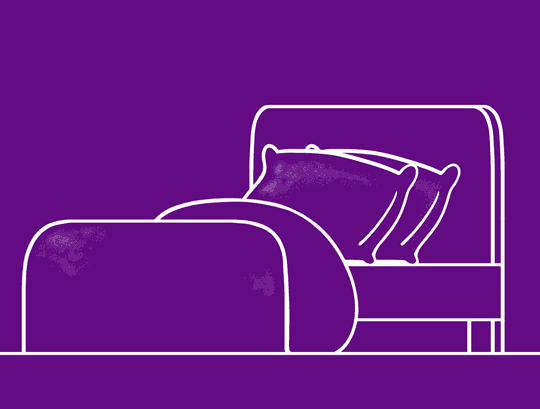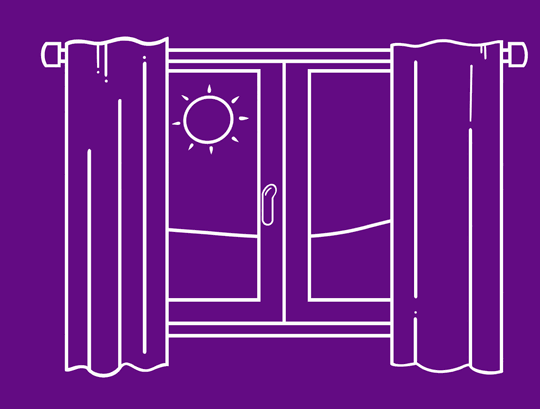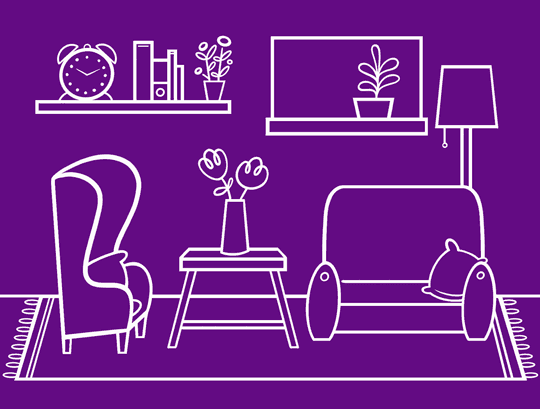12 people found this helpful

Have you found yourself sniffling and sneezing in a way you can’t explain? If it's not hay fever season, you don't have a cold, and the only pet you ever had was a stick insect when you were 10, you might have a house dust allergy.
Good news, though: there are plenty of dust allergy home remedies and ways to reduce the number of allergens in your house. Here are 5 of the best.
1. Treat dust allergy symptoms

While you work on addressing the root causes of your house dust allergy, it’s important to take good care of yourself. It’s always a good idea to see a doctor – especially if you think you might have asthma – but plenty of dust allergy remedies in the form of over-the-counter antihistamines can help manage your allergic reaction to dust.
In the short term, you can also use a saline solution nasal spray to shift that stuffiness in your nose and throat. While you’re blowing your nose often, make sure you have some soft, strong Cushelle tissues in easy reach.
Dust can appear in any room of the house, so keep a box of soft Cushelle tissues in every room and since we replaced their plastic openings with a paper alternative, they’re recyclable all in one piece.
2. Mite-proof your home

Did you know that dust mite allergy is one of the most common causes of asthma? Dust mites live in even the cleanest houses, thriving at temperatures of more than 21 degrees Celsius and in humid climates – bad news indeed for the centrally heated UK. Luckily, you can buy dust mite sprays and ultrasonic plugs to stop those allergens in their tracks.
Soft furnishings are prime settlement areas for the humble dust mite, and one of the easiest dust allergy home remedies around is to buy dust-mite-proof coverings for your pillows and mattress. While they won’t get rid of any dust mites already living there, they will stop new mites getting in and minimise your contact with them.
3. Damp-proof your home

As well as making dust mite allergy symptoms worse, damp homes can be a haven for mould and fungus spores, which also live in dust and cause that sneezing and sniffling. To deal with the damp that might be causing your house dust allergy, make a point of opening your windows regularly to ventilate your home.
Make sure that your house is warm enough to evaporate some of that moisture, too. Setting your thermostat to between 18 and 20 degrees should keep you cosy without helping dust mites breed. If all else fails, you could invest in a dehumidifier to suck that excess moisture out of the air.
Fresh air – it's good for you! If you’re struggling with dust allergies while travelling, try switching the car or bus with a bicycle for short trips. Fresh air, less dust-ridden fabrics – it's a winner for your nostrils and a great way to get some exercise and live sustainably.
4. Keep things clean

Unless you live in Antarctica, it’s unlikely you’ll be able to get rid of dust mites entirely, but having a clean house can help control dust allergy symptoms. Cleaning gets rid of microscopic particles including human skin, fabric and lint scraps, tiny pieces of food and more, which can trigger an allergic reaction to dust.
It’s important to vacuum upholstery and carpets, of course, but vacuuming doesn’t help much by itself. You also need to wash your bed linen frequently, along with cushion covers and (if possible) curtains. While you’re cleaning, protect yourself from flying dust by wearing a dust mask – or by asking someone who isn’t allergic to do the cleaning for you.
When we get hay fever, it can mean spending the whole summer with a runny nose that can get sore. We like to wipe our sniffles with Cushelle Pocket Packs, because they’re super strong but gentle on our noses, and they’re made from natural fibres from FSC® certified renewable sources.
5. Extreme makeover

If you’re the homeowner and things are looking a bit tired, you might need to consider some more drastic dust allergy remedies. Carpeting is a major culprit when it comes to harbouring dust mites and other irritants, so if your allergy is really causing you grief, you might like to think about exchanging your carpets for hard floors.
We hope this advice has helped you on your quest for a comfortable, sniffle-free life. Remember to see a doctor if your dust allergy symptoms are really getting you down and ask for help if you need it.
Related articles
Nosebleeds Causes: Why They Happen and How to Prevent Them
Learn about the most common nosebleeds causes here with Cushelle. Find out the link between a cold and a nosebleed, plus ways of preventing them.

5 natural and herbal remedies for hay fever to try at home
Want to know how to treat a pollen allergy at home? Discover five options, from herbal teas and steaming to herbal remedies for hay fever relief, here.

How to stop a runny nose: why do we get runny noses and 5 ways to stop them for good
Find out how to stop a runny nose naturally. Discover our top tips, and natural and herbal remedies for a runny nose to stem the flow more quickly, here.

4 tips for unblocking a newborn’s nose
Learn how to blow a baby's nose and how to teach nose blowing to older children with this guide on how to clean baby nose blockages.

How to blow your nose: 5 nose blowing tips for parents and kids
Teaching kids to blow their nose can be a challenge. Follow our useful kid-friendly guide for some handy tips and techniques on how to blow a child's nose.

5 oily skin tips: how to cope with oily skin
Learn how to prevent oily skin with your skincare routine, diet and home remedies for oily skin, plus the best make-up for shiny skin. Click here for more



